Some of the links in this article are affiliate links which means that if you choose to click on them and make a purchase, I earn a small commission at no extra cost to you.
Also, as an Amazon Associate, I earn from qualifying Amazon purchases.
For more details, please read the full disclosure here.
Thanks so much for your support!
Chunky acrylic paint can happen to the best of us and it’s a huge disappointment every time. How did it happen? Is it bad? Can I fix it? HELP!
Take a deep breath, friend, because I will show you how to save your chunky acrylic paint, whether fluid, in a tube, in your wet paint on a canvas, or dried onto a finished piece.
These are some of the best ways I’ve found to get rid of the lumps and bumps and I want to share my tricks with you so you can save money and continue to use your paint long into the future.
To fix chunky acrylic paint in the tube, you’ll need to either strain it, add water, and/or add a medium. If you have chunky paint on the canvas, tweezers or sandpaper should do the trick, depending on if the paint is wet or dry.
But let’s really take a close look at how to fix your lumpy paint so you can confidently save your beauties anytime the need arises. Let’s go!
In This Article...
- What Causes Lumps in Acrylic Paint
- How To Fix Thick Acrylic Paint That Has Chunks
- Experimenting With Smoothing Out Acrylic Paint Using Mediums
- How To Fix Lumpy Fluid Acrylic Paint
- Fix Chunky Acrylic Paint That’s Still Wet On The Canvas
- How To Get Rid Of Lumps On Your Finished Painting
- When To Chuck Your Chunky Paint
- Saving Lumpy Paint (Final Thoughts)
What Causes Lumps in Acrylic Paint
Not closing the paint tube caps, old paint, being stored at the wrong temperature, and keeping paint in a place with highly fluctuating temperatures. These are just a few of the “reasons” I’ve come across for why you may be dealing with chunky paint.
However, in the case of “old” paint, I may or may not have some paint that is roughly twenty years old at the time of this article… and it’s still usable…
As for storing paint at the wrong temperature or highly fluctuating temperatures, my art room is freezing in the winter and stupid hot in the summer due to a lack of proper airflow and having to keep the door shut so certain curious kitties don’t get up to shenanigans with my precious painting tools.
The only paint that’s gotten chunky are a few of my older paints, that I’ve since fixed (more on that later), and a tube of Burnt Umber that has been a chunky thorn in my side since I first bought it!
I have experience working with pigments and micas as a former soap maker. I’ve found that Brown Iron Oxide, the pigment used in Burnt Umber, does not like to disperse in water based liquids. It takes a lot more stirring and additional liquid to get it to bend to your will.
So what does that mean for you as a painter? Well, acrylic paint is water based (that’s why it’s a simple soap and water cleanup!) and Brown Iron Oxide doesn’t like playing with water. See where I’m going here?
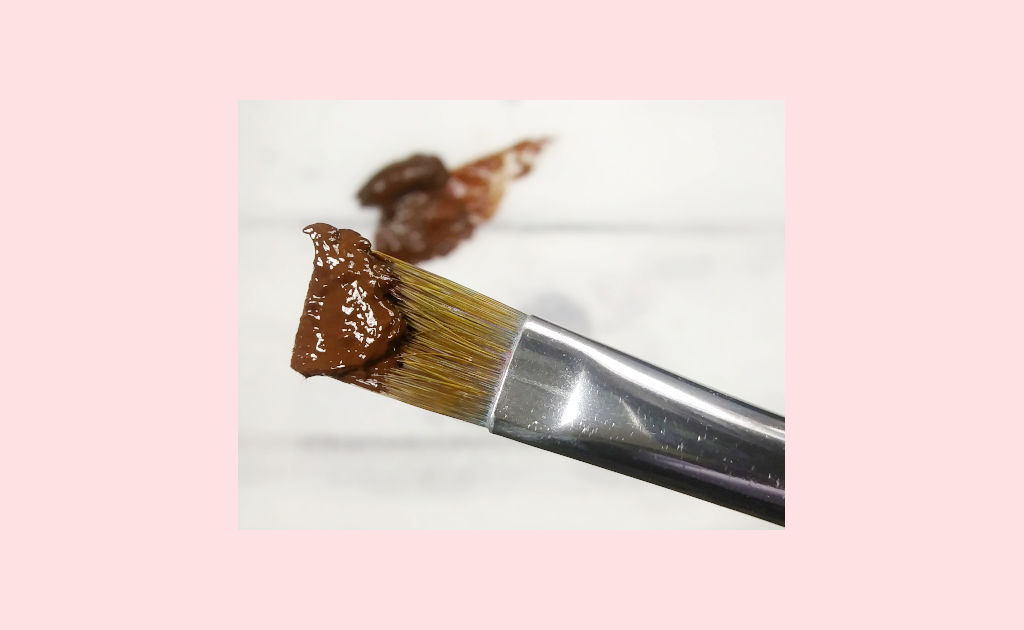
It’s my own theory that because Burnt Umber is Brown Iron Oxide pigment that’s been “burnt/cooked/whatever”, it could be causing the pigment to be even more challenging to mix correctly with the acrylic paint binders.
That said, I think that the source location of the Brown Iron Oxide pigment makes a difference because the issues with chunky Burnt Umber acrylic paint can be company specific. So, you could buy a Burnt Umber from one company and it will be excellent but, from another company, it could be a lumpy, bumpy nightmare.
Am I absolutely sure that my theory is correct? No. But, having worked with pigments and micas in the past, it’s just as valid as the other theories that haven’t turned out to be the cause of chunky acrylic paint, at least for me.
So, because there seems to be a gazillion theories to explain why acrylic paint may get chunky, it’s best to focus on how to fix it instead.
However, if you are in the middle of a project and are like, “I don’t have time for this! I need brown paint right now!!!” check out my article that will teach you how to mix up your own brown paint.
How To Fix Thick Acrylic Paint That Has Chunks
Like student grade and professional, thicker acrylic paints have a creamy buttery-like consistency, so you’ll mostly want to stick to thin liquids to fix your chunky acrylic paint.
Using Water To Take The Lumps Out Of Acrylic Paint
Now, if you’ve researched this problem, you’ve probably read that you should mix water into your paint. It’s readily available, quick, and inexpensive, making it a good option.
However, you need to be very careful with how much water you add to your paint or you may run into issues down the road. If too much water is used, you might thin out the acrylic binders, which will cause “under binding” on your canvas.
What is under binding? Well, it’s where the binders in your acrylic paint have been diluted too much and lose the ability to stick to the canvas.
To fix your chunky acrylic paint with water:
- Empty the paint tube onto a palette or a paper plate
- Make sure you have some type of airtight container to transfer your paint into once you’ve fixed it
- Using a palette knife, squish your paint together to loosen it up a bit
- Next, add a few drops of distilled water to the paint and get to squishing with your palette knife again
- Check to see how the consistency is coming along and if needed repeat the process until you are satisfied
- Scoop up the paint and store it in the airtight container
Using Acrylic Mediums To Whip That Chunky Paint Into Shape
Mediums are fantastic tools to add to your art kit. Although they may seem expensive, they last a long time and are typically multi-purpose.
My opinion is that they are totally worth the money and I am super quick to recommend them to everyone because they’ve helped me so much in my art journey.
Adding a medium to chunky acrylic paint will introduce the liquid you need to smooth things out without compromising the acrylic binders in the paint like water can. In fact, acrylic mediums are made with the same binders already present in your paint.
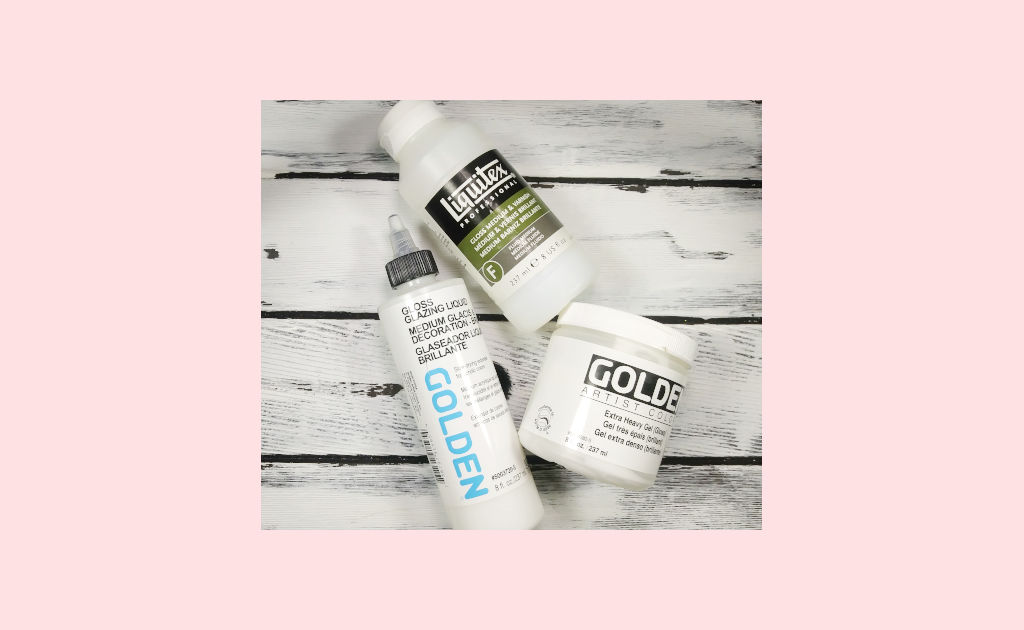
I was talking to a Golden Paint Materials Specialist about mediums to get their thoughts and recommendations on how to loosen chunky acrylic paint.
Their suggestion is that a thinner medium would be best, such as their GAC 100, Gloss Medium or Fluid Matte Medium, or even a Soft Gel Medium might potentially work.
The specialist said that if the chunky acrylic paint was due to water loss or partial drying in the tube, you should add a small amount of distilled water along with the medium.
It’s a good idea to look at the acrylic mediums before choosing which one you want to use. Each medium has different properties that could unexpectedly affect the paint if you don’t read up on it first.
For instance, I could add Golden’s Gloss Glazing Liquid to my chunky acrylic paint, which would totally work. Still, it would make that paint slower to dry than my other paint from the same brand, and it could cause it to become more transparent if I use a lot.
By the way, I am not being sponsored by Golden. I’m just a really enthusiastic fangirl, haha! Check out Golden’s different mediums and read up on their properties.
Also, make sure to take a look the acrylic painting mediums that Liquitex offers.
To add a medium to your paint:
- Find an appropriate airtight container to put your newly smooth paint in (I like to use mini plastic condiment cups with lids)
- Squeeze all of the paint out of the tube and onto a palette or a paper plate
- Using a palette knife, add a small amount of your chosen acrylic medium to your paint and mix well
- Next, add a few drops of water and, again, squish it really well
- Now is a good time to stop and check the consistency
- If it still needs some work, repeat the above steps
If you can’t be bothered fixing the paint that you have, you might find my article, which shows you everything you need to know about substituting your paint colors, helpful.
Experimenting With Smoothing Out Acrylic Paint Using Mediums
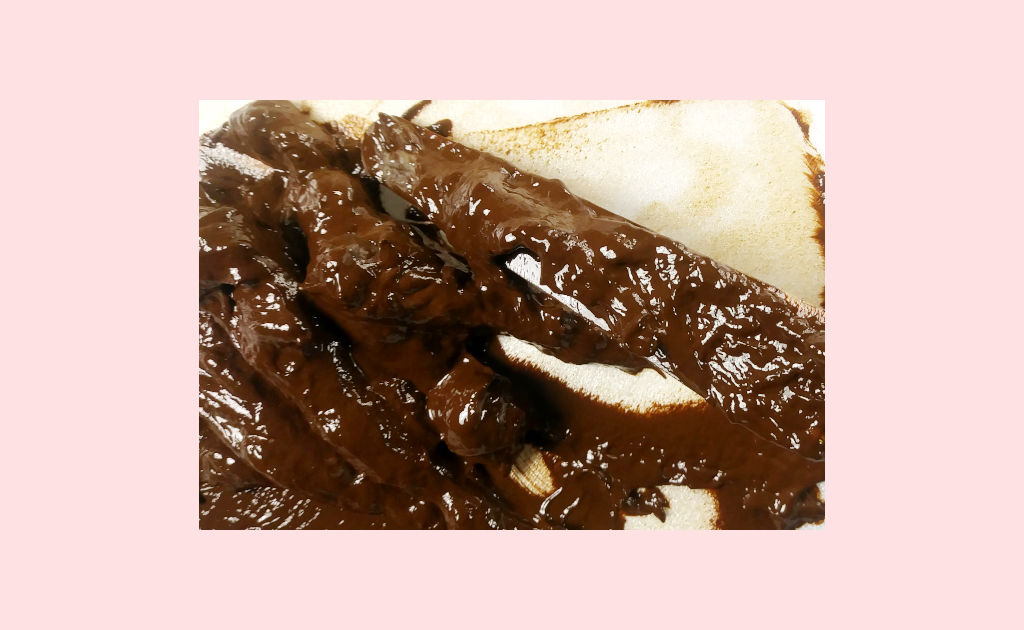
It’s hard to see the consistency of the paint from the photo but it’s actually quite rubbery and has a grainy look to it. It was in bad shape but not horrible so I thought I’d take the opportunity to play around with it and see if I could bring it back to its former glory.
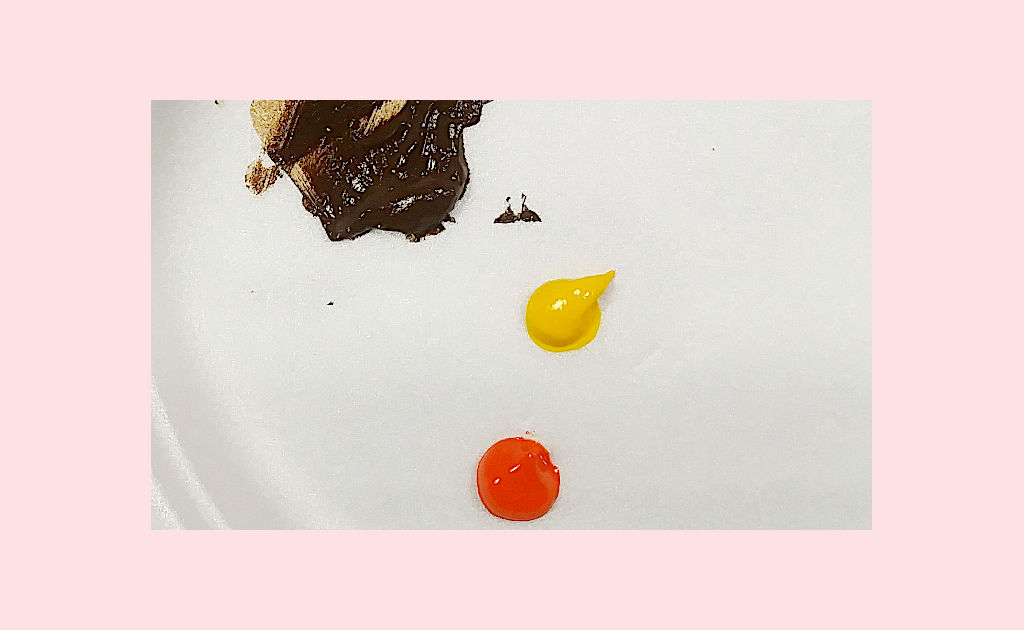
The acrylic mediums I have on hand to play with are Golden’s Extra Heavy Gel (Gloss), Golden’s Gloss Glazing Liquid, and Liquitex’s Gloss Medium and Varnish.
I added a small amount of each medium to some of the Burnt Umber paint and started squishing paint as if my life depended on it!
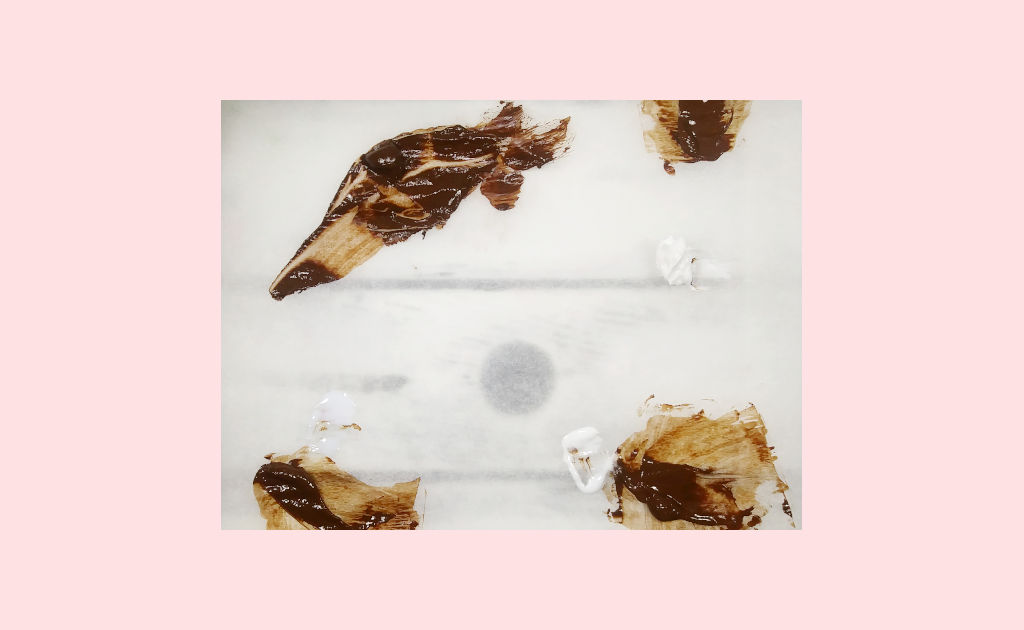
My favorite was Golden’s Gloss Glazing Liquid out of the three mediums I used, but all three mediums worked perfectly. My Burnt Umber is now creamy and smooth.
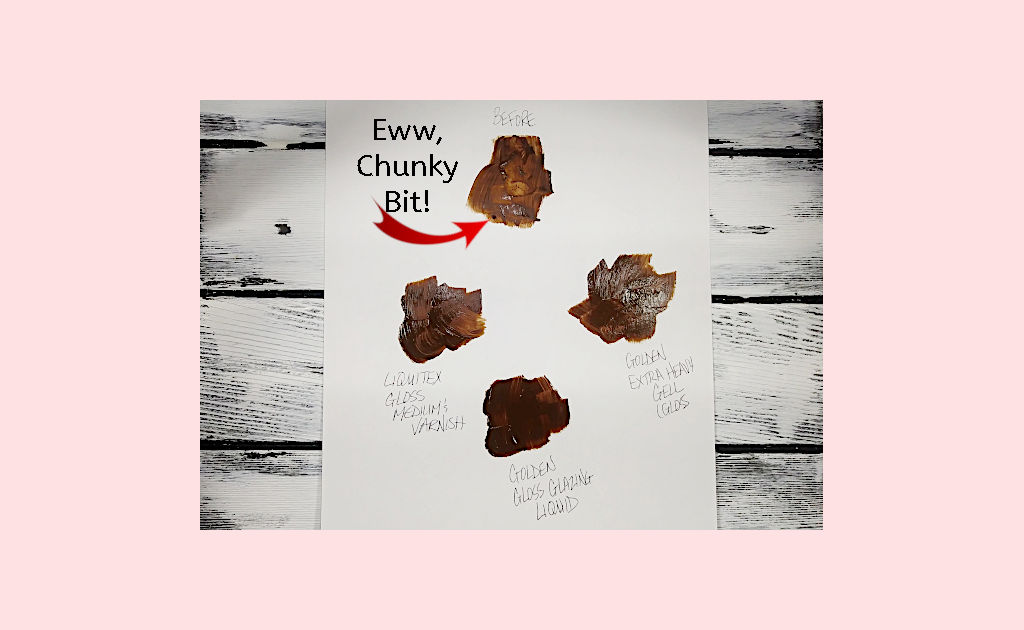
It’s worth noting that, after speaking with two different artist paint companies, one said I could add mediums and the other said that they don’t suggest using mediums to fix chunky acrylic paint.
So, basically, do what you feel comfortable doing. Unless you are an experienced artist and already know how the paint will behave down the road, save the newly rejuvenated acrylic paint for practice pieces or experimenting.
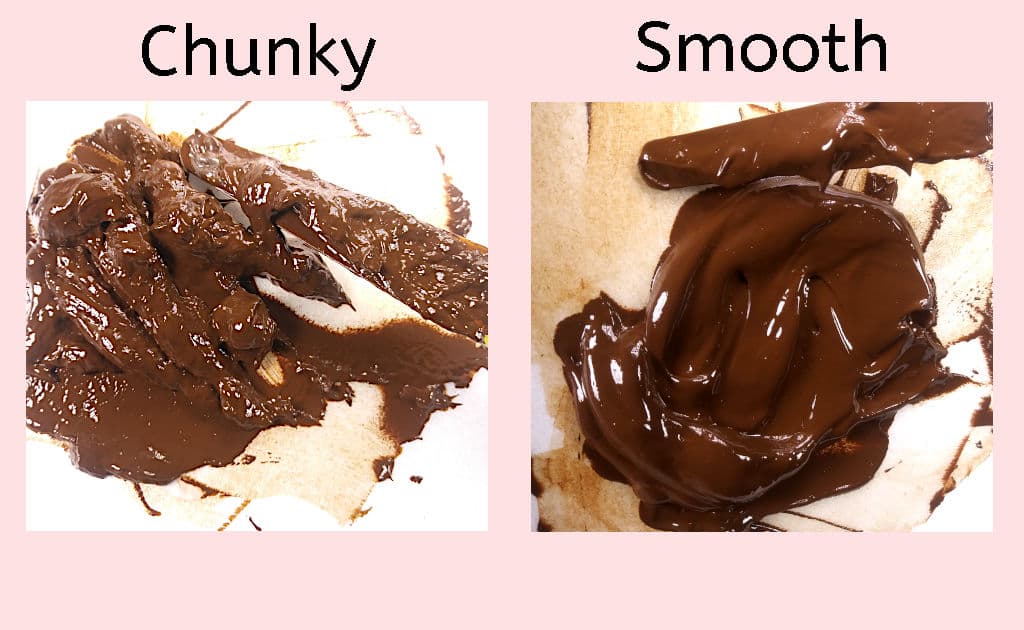
How To Fix Lumpy Fluid Acrylic Paint
Getting the chunky bits out of fluid paint is actually pretty easy.
Over the years, I’ve collected an assortment of craft paints from different places because I can’t resist the pretties (you feelin’ me?).
Some of these bottles of paint are very old, but I just can’t part with them! So, because I noticed that they were getting lumpy in the bottles, I decided to see if I could save them. And, guess what? It worked and I still use them today! But, just for practice paintings and definitely not for a painting that I’m planning on gifting or selling.
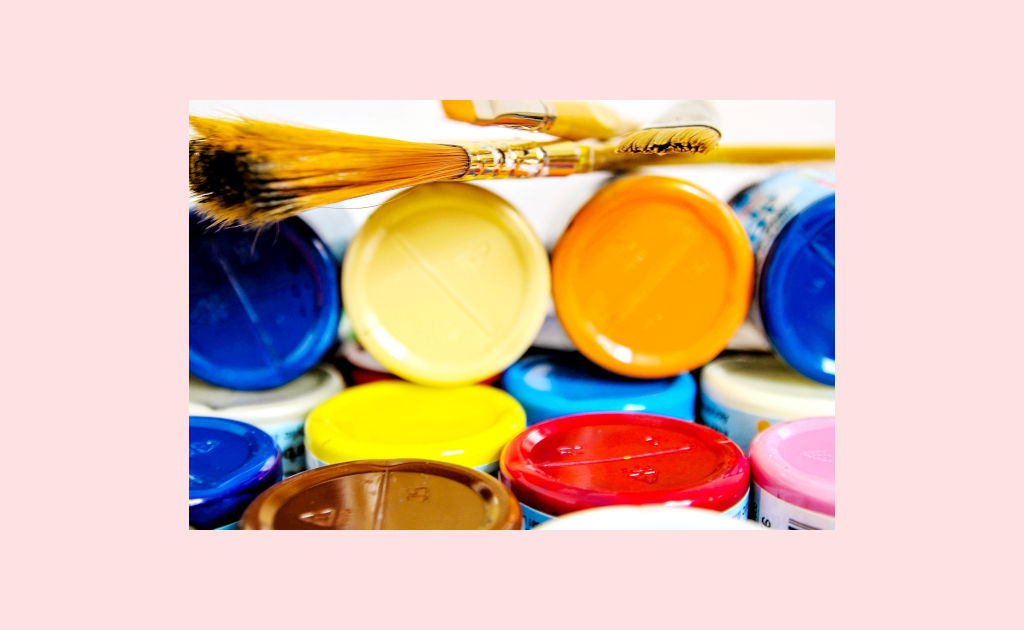
To get the lumps out of fluid acrylic paint:
- Find an airtight container that has a wide opening
- Wear old clothes and rubber/latex gloves (this is gonna get messy!)
- Cover your work surface with a large old towel, plastic wrap, wax paper, or even parchment paper
- Cut a pair of pantyhose off at the knee (or less, depending on how much paint you have to strain)
- Slowly dump the fluid paint into the pantyhose while holding it over the new container
- Gently squeeze the pantyhose until you’ve pushed the majority of the paint through the foot of the pantyhose
- If you’re having trouble getting the paint to strain through the pantyhose, add a bit of water before removing it from the bottle
That’s all there is to it! I’ve done this with probably about 20 bottles of craft paint and it worked like a charm.
Fix Chunky Acrylic Paint That’s Still Wet On The Canvas
No worries if you are in the middle of a painting and you notice you’ve got chunks of acrylic paint on the canvas.
You can either use a pair of tweezers or a few bristles on a coarse paintbrush to remove the little buggers.
The name of the game is slow and steady. Do you remember that board game called “Operation”, where if you touched the sides, while trying to remove an object from the patient, the buzzer would go off and the guy’s nose would light up (totally dating myself, haha)? Yeah, it’s like that, so think of yourself as a surgeon.
The goal is to remove the nasty lump without disturbing the wet paint around it, or at least minimally.
To Pick Chunks Out Of Wet Paint Using a coarse bristle paintbrush:
- Grab a clean, dry paintbrush with really firm bristles (if the bristles are splayed out, even better!)
- Holding the paintbrush near the ferrule (the metal bit that covers where the bristles are glued to the handle), use just a few of the hairs on the tip of the paintbrush to sort of “scoop” the chunky bit off of the canvas
This will take patience and practice but it’s much easier than trying to remove a stray hair from wet paint! Oy vey!
I think using tweezers is pretty self-explanatory so I’ll leave that one alone.
How To Get Rid Of Lumps On Your Finished Painting
If you find that some chunky acrylic paint has dried onto your beautiful work of art, all is not lost, friend!
How to fix dried lumps of paint on your artwork:
- Make sure that your painting is completely dry before attempting this
- Using a small piece of fine-grit sandpaper (anywhere from 180-240), gently sand the bump down, checking every once in a while to see if it’s level with the canvas
- Once it’s smooth, wipe the area with a damp cloth to get rid of any dust particles
- Let dry
- If needed, go in with a small detail brush and touch up the paint
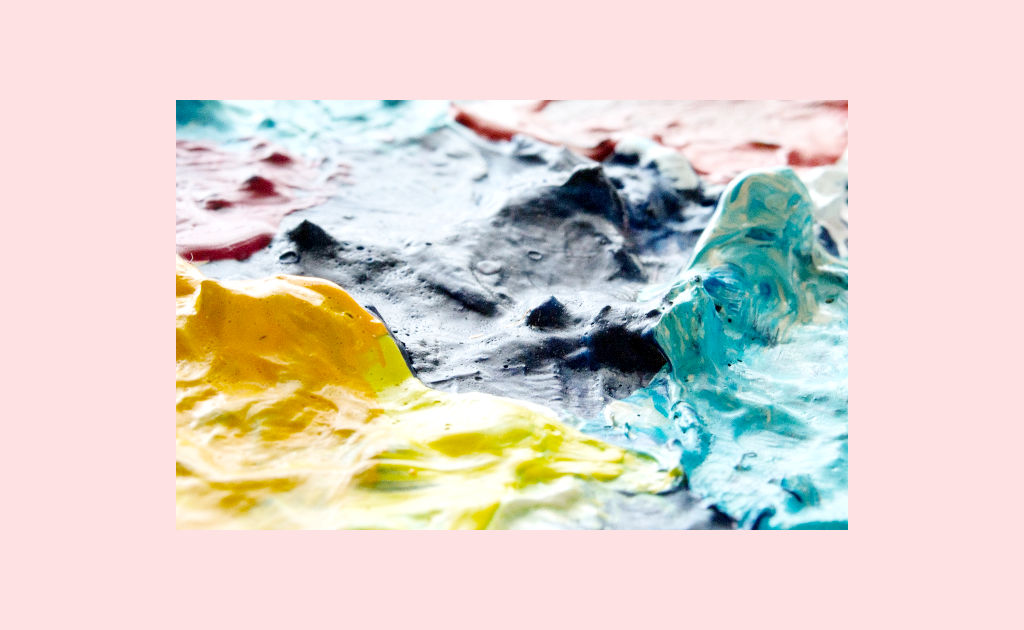
When To Chuck Your Chunky Paint
Sadly, there are some times when there is no fixing your paint. RIP, chunky acrylic paint. You were a lovely color to have…..
The above methods to fix lumpy paint are really just for paint that still has quite a bit of moisture and just needs to be smoothed out. However, there are a couple of scenarios where you’re better off buying a replacement.
If you find that most of the paint is hard, it’s best to just toss it and buy new or experiment with the other paint colors you have and try to make your own recipe.
That said, you might want to save the dried chunks. There are a lot of people who will use “paint skins” (artist speak for “dried bits of paint”) to add texture to their canvas. They will adhere the dried paint to the canvas with a medium and either paint over it or add it after most of the painting is finished. Being creative is pretty darn awesome!
Lastly, just let it go if you smell something funky or see mold. It’ll be okay. There will be more paint colors in your life. Or, hey, maybe this is the excuse you’ve needed to make a trip to the ol’ art store!
Saving Lumpy Paint (Final Thoughts)
It can be a real bummer to find you’ve got a tube full of chunky paint but it’s not the end of the world. With a few tools and a little know-how, you can save your paint, not to mention your money. We love double wins around here!
If you’ve found this article helpful, share it with all of your artsy friends!
More Help With Acrylic Painting Tools:
- Cleaning Acrylic Paintbrushes
- How to Manipulate the Drying Time of Acrylic Paint
- Tricks to Save Money on Your Tools

Meet Sara, a seasoned veteran in the world of art. With a knack for mixing paints to unveil breathtaking new hues, she’s adorned countless commissions and independently captivated art enthusiasts with her creations. Having spent over a decade immersed in the realm of art gallery management, Sara’s insight into the intricacies of the art scene shines through her work.
But don’t let her impressive résumé fool you – Sara’s approach to art is as lively as her palette. Known for her wit and humor, she infuses her passion for painting with a playful spirit, making every stroke a delightful adventure. As a dedicated mentor, she’s committed to guiding her fellow artists towards success, always staying ahead of the curve with the latest techniques and trends.
